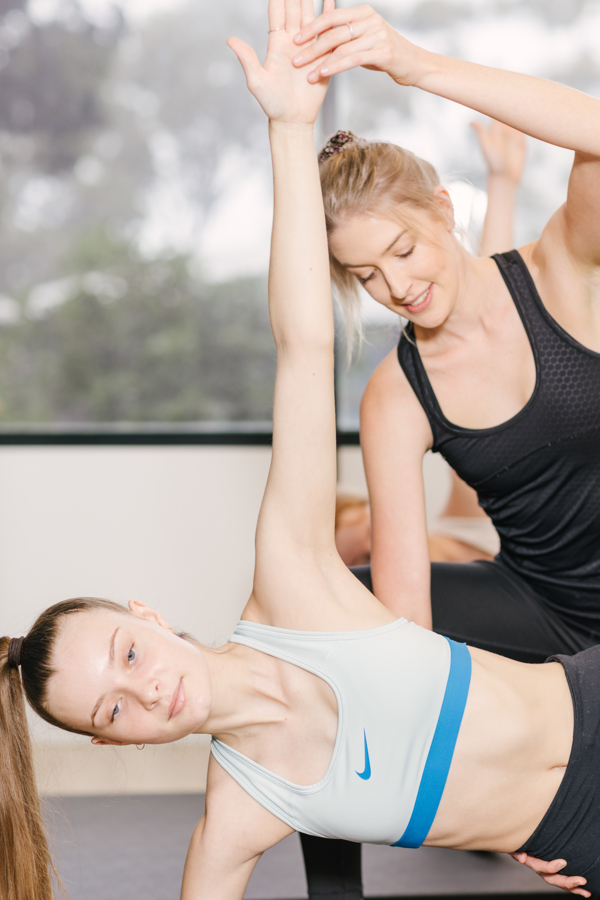
Sanskrit's word for "unite or join" is where yoga comes from. This union refers not only to a union of mind, body, but also to an individual consciousness that is united with the universal consciousness. Yogaic practice was widespread in India during the early years of the 20th century. Lord Shiva was the first known Yogi. He disseminated it via his writings. These books were translated into many languages and distributed to different regions around the globe.
As yoga became more popular, it wasn't uncommon for the practice to be seen as more westernized, particularly in Europe. In the early 1900s, the emergence of VHS tapes and DVDs led to the widespread distribution of yoga videos. The booming fitness industry and the Internet made yoga popular in the United States, and the spread of the practice was fast and widespread. In the 1990s, the invention of the microphone and the transatlantic flight made it possible to reach large audiences and spread ideas widely.
The history of yoga dates back thousands upon thousands of years. Although yoga was originally practiced for spiritual reasons, Westerners only discovered it in the middle of the 19th century. Swami Vishwananda, an Indian monk and teacher, traveled across Europe and the United States to share the practice. Later, he taught yoga in the West where it became very popular. This is an excellent place to learn about the history and practice of yoga.

The roots of yoga date back to ancient India. The Vedas are the oldest of all the four Vedas and contain references to yoga. The Rig Veda is home to over 1000 hymns as well as 200 mantras. The Rig Veda was used to teach the different postures and positions of yoga by the priests of Vedic times. Later centuries saw many Rishis refine the practice and bring it into the 21st century. Another great resource for information on the history of yoga is the Upanishads.
Yoga was first mentioned in ancient India. Asanas were physical positions that yoga became popular. Hatha yoga became popular in the U.S. in the 1900s. Many teachers added asanas into their classes. The 1970s saw the practice become mainstream and accepted all over the globe. Its popularity and spread was fuelled by the birth of yoga in America.
The history of yoga is complex. Its roots go back to 2000 BC, when yoga was primarily about the mind. Then, it was influenced by western gymnastics, and the first Hatha yoga practices were developed. In the 1920s, the practice evolved into a more body-centered form of yoga, called hatha yoga. Asanas can be used today to help achieve this goal.
Yoga has a long history that goes back to ancient India. The practice of yoga thousands of years ago was very different to the Vinyasa classes we have today. The history of yoga will help you to appreciate and understand it better. You will see that ancient yoga was not done in the same manner as modern-day Yoga. It is possible to trace the origins of Yoga back thousands of years. This will help you gain a greater appreciation for the practice.

A rich tradition of yogic practices can also be found in the history of yoga. Although the ancient yogis were mainly Hindu, they were also influenced by Hindu culture. In the west, yoga was largely banned by the British. After this, the practice of yoga began to spread in Europe and the USA. During the late 1800s, gurus from India brought yoga to the United States. Asana is a form of meditation.
Asana is the foundation of most yoga practices. Asana is a very ancient practice. In the 5th century, the practice of yoga was a spiritual and religious practice. Jainism and Buddhism were also considered ancient religions. The Classical Period witnessed the first systematic presentation and explanation of yoga practices and beliefs in Hinduism or Jainism. For centuries, yoga's popularity and influence grew. Like any new practice though, the roots are still grounded in the same principles as the original.
FAQ
Is Cardio Better Than Strength Training?
Both are equally beneficial. However, cardio is more effective if you're looking to bulk up faster.
Cardio burns more calories in a minute than strength training and more fat.
Strength training is a great way to build muscle mass. However, it takes more effort than cardio.
What does milk do to men?
When you next buy milk, think of other uses. You might also find it helpful to stop drinking coffee.
The benefits of milk have been demonstrated to be both beneficial to children and adults. Milk is rich in nutrients for children, including vitamin D and calcium.
It promotes weight gain, digestion, bone strength, and aids digestion. People who consume dairy products have lower rates of illness and better immune systems.
People who have difficulty digesting milk are also likely to be able to enjoy its many benefits, even if they do not have stomach problems.
Drink more milk than soda and juice. The extra calcium and vitamin D found in milk can help strengthen your teeth and bones.
You can make yogurt with plain low-fat milk if you don't love the taste of milk. Yogurt can be a great substitute for milk, as it has fewer calories and more protein.
Yogurt also contains probiotics, which aid in digestion and improve immunity.
Warm milk can help you sleep better if you have trouble falling asleep. Warm milk helps relax muscles and boosts serotonin levels.
Do Men Need A Gym Membership?
A gym membership is not necessary for men. If you sign up for a gym, however, your money will be much more valuable.
Many gyms offer free trial memberships so you can try the facilities out before paying for anything.
You can use our gym anytime you like and it's free. You can cancel your membership at any time, no matter how much you like it.
What does butter do?
Butter is one source of saturated fats. This type of fat contributes to healthy skin, hair, and stronger bones.
Vitamin K in butter also prevents bleeding from cuts, bruises and other injuries. Vitamin K works with vitamin A to prevent bleeding.
Butter is also rich in minerals, including calcium, phosphorous, and potassium. These elements promote stronger bones and teeth.
Butter has its limitations. Butter has high cholesterol. A few studies have shown that too much cholesterol can increase the risk of developing coronary disease.
Butter also contains high amounts of saturated fat, which contributes to obesity and increases cholesterol.
However, if you must have butter, try spreading it on bread rather than dipping it into soup or salad. Bread absorbs oil more than pasta or potatoes.
Statistics
- An estimated calorie range for moderately active adult males falls between 2,200 to 2,800 calories per day, depending on age. (eatright.org)
- The PRS enabled risk stratification for overall prostate cancer and lethal disease with a four-fold difference between men in the highest and lowest quartiles (HR, 4.32; 95% confidence interval [CI], 3.16-5.89). (pubmed.ncbi.nlm.nih.gov)
- Are You One of the 20% of Guys (mh.co.za)
- Candidates and applicants must pass all four tests at 70% (minimum level) to graduate from Basic Deputy U.S. Marshal (BDUSM) Training. (usmarshals.gov)
- Get free shipping and 25% off today. (healthline.com)
External Links
How To
What should I eat before going to the gym?
You need to eat less calories than you burn while exercising in order to lose weight. You must also eat all of your nutrients.
These include protein, carbohydrates and fats as well as vitamins.
It is better to eat smaller meals throughout the day than three large ones.
Working out if you are hungry can cause you to perform poorly.
Consider drinking water rather than sugary energy drinks. This will help you stay hydrated as well as energized.
Be sure to eat enough fluids. You could lose electrolytes if you drink too much water.
Your body needs electrolytes for proper functioning.
Sports drinks are an option if you don't have water. They are rich in sodium, potassium, calcium and magnesium as well as other minerals.
These help replenish electrolytes lost through sweating. However, they still won't replace what you've lost from sweating.
You could also consider taking a multivitamin tablet if you are concerned that you might lose too much salt from exercising.
These include extra vitaminB6, which regulates your body's sodium level.
Supplements shouldn't be used if you don’t know how much salt is in food and beverages.
They aren’t regulated under the Food and Drug Administration.
One example is that some sports drinks contain more sodium.
Sports drinks can contain artificial sweeteners and preservatives. These ingredients could cause digestive problems.
Sea salt is an option if you don't want to eat too much salt.
It contains fewer chemicals then table salt.
Sea salt is low in iodine as another mineral necessary for healthy thyroid function.